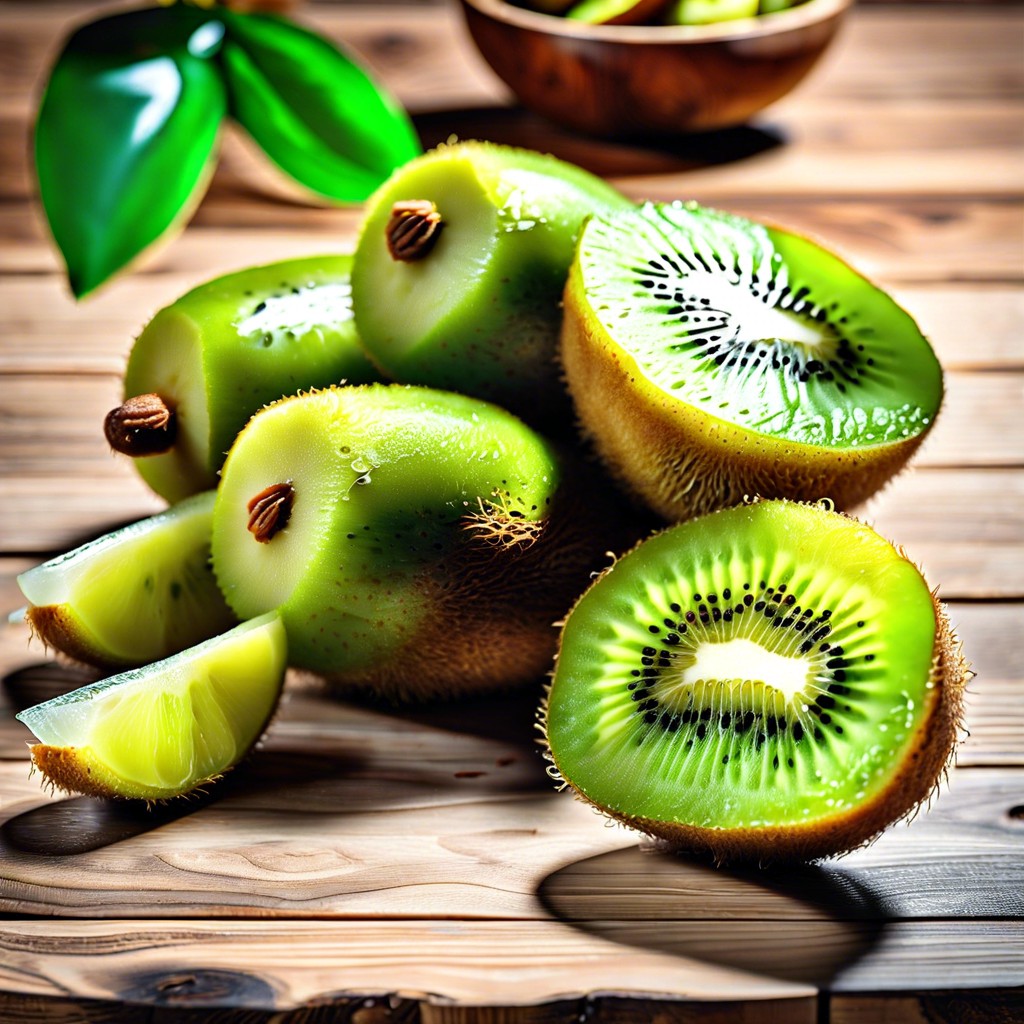Empanadas are a type of appetizer originating from Latin America, consisting of pastry filled with various ingredients such as meat, cheese, or vegetables. They are typically baked or fried and served as a delicious starter dish.
Empanadas are a popular appetizer that can be found in many parts of the world, from Latin America to Spain and the Philippines. But what exactly is an empanada? Is it a pastry, a turnover, or something else entirely? In this article, we’ll explore the history of empanadas and their various forms across different cultures.
Whether you’re already a fan of these delicious bites or have never tried them before, read on to discover more about this savory snack.
What Are Empanadas?
Empanadas are a type of pastry that is filled with various ingredients and then baked or fried. They are believed to have originated in Spain, but they quickly spread throughout Latin America and the Philippines.
The word “empanada” comes from the Spanish verb “empanar,” which means to wrap or coat in bread.
The dough used for empanadas can vary depending on where you are in the world, but it is typically made from flour, water, salt, and fat (such as butter or lard). Some recipes may also include eggs or milk.
The fillings for empanadas can be sweet or savory and range from meat (such as beef) to cheese to vegetables like spinach. In some regions of Latin America, fruit-filled empanadas are popular desserts.
Empanadas come in different shapes depending on their country of origin; some look like half-moons while others resemble small pies. They’re often served hot out of the oven with dipping sauces such as chimichurri sauce (a tangy herb-based sauce) or salsa criolla (a tomato-based condiment).
Origin of Empanadas
The word “empanada” comes from the Spanish verb “empanar,” which means to wrap or coat in bread. It is believed that empanadas originated in Galicia, a region located in northwest Spain, where they were known as “empanadillas.” These early versions of empanadas were filled with seafood or meat and vegetables.
As Spanish explorers traveled across the Atlantic Ocean to colonize Latin America, they brought their culinary traditions with them. Empanadas quickly became popular throughout Latin America due to their versatility and portability – they could be easily carried on long journeys without spoiling.
Today, emapanads are enjoyed all over the world as a delicious appetizer or snack food. While traditional fillings vary by region – for example beef is more common in Argentina while chicken is more popular in Mexico – there are countless variations available today including vegetarian options like spinach and cheese or sweet dessert varieties filled with fruit preserves.
Traditional Fillings
There are some traditional fillings that have been enjoyed for generations in Latin America and beyond.
One of the most popular traditional empanada fillings is beef. In Argentina, for example, beef empanadas are a staple food and often served at parties or gatherings.
The filling typically consists of ground beef mixed with onions, garlic, cumin, paprika and other spices.
Another classic filling is chicken or turkey mixed with vegetables such as bell peppers and onions. This combination creates a flavorful mixture that pairs well with the pastry crust.
For those who prefer vegetarian options or want to mix things up from time to time – cheese (such as feta), spinach & ricotta cheese; black beans & sweet potato; mushroom & onion; corn & mozzarella cheese – all make delicious alternatives!
Empanadas Dough
The dough should be sturdy enough to hold the filling but also flaky and tender. Traditional empanada dough is made with flour, water, salt, and lard or shortening.
However, many variations exist that use different types of fat such as butter or oil.
One popular alternative to making your own empanada dough from scratch is using pre-made Goya wrappers which can be found in most grocery stores’ freezer section. These wrappers are convenient and easy to work with since they come already cut into circles.
If you prefer making your own homemade empanada dough from scratch but don’t have access to traditional ingredients like lard or shortening, there are plenty of substitutes available such as vegetable oil or coconut oil.
When working with the empanada dough it’s important not to overwork it so that it doesn’t become tough when baked/fried later on. It’s also essential not to roll out the pastry too thin; otherwise, it may break apart during cooking.
Goya Wrappers
These pre-made dough discs are available in most grocery stores and can save you time when preparing your empanadas. Goya wrappers come in different sizes, so make sure to choose the right size for your recipe.
Using Goya wrappers is easy – simply place a spoonful of filling on one side of the wrapper, leaving enough space around the edges to seal it shut. Then fold over the other half of the wrapper and press down on all sides with a fork or your fingers to create a tight seal.
While using Goya wrappers is convenient, some people prefer making their own dough from scratch as they have more control over its texture and flavor. However, if you’re short on time or don’t feel confident about making homemade dough yet, using store-bought options like Goya’s can be an excellent alternative.
Empanada Wrappers Alternatives
One option is using pre-made Goya wrappers, which can be found in the frozen section of most grocery stores. These wrappers come in various sizes and can be filled with any desired filling before being baked or fried.
Another alternative is using puff pastry sheets as a wrapper for your empanadas. This will give them a flakier texture and add an extra layer of flavor to the dish.
For those looking for gluten-free options, corn tortillas or rice paper wraps can also work well as an alternative wrapper for empanadas.
Ultimately, the choice of wrapper comes down to personal preference and dietary restrictions.
Cooking Methods
The most common methods are baking and frying.
Baking is a healthier option as it requires less oil than frying. To bake empanadas, preheat your oven to 375°F (190°C) and place them on a baking sheet lined with parchment paper.
Brush the tops with egg wash or olive oil for added flavor and color before placing them in the oven for about 20-25 minutes until they turn golden brown.
Frying empanadas gives them that crispy texture that many people love. Heat up enough vegetable oil in a deep pan or pot over medium-high heat until it reaches around 350°F (180°C).
Carefully add the empanadas to the hot oil using tongs or slotted spoon, making sure not to overcrowd them so they cook evenly. Fry each side for about two minutes until golden brown before removing from heat onto paper towels to drain excess grease.
Regional Variations
Each region has its own unique take on this classic appetizer, with variations in fillings, doughs, and cooking methods.
In Argentina, empanadas are typically filled with beef or chicken mixed with onions, peppers and spices. They’re often baked rather than fried to create a crispy crust while keeping the filling moist.
Chilean empanadas have a more savory flavor profile compared to their sweet Argentine counterparts. The most common filling is called “pino,” which consists of ground beef cooked together with onions, raisins and black olives.
In Mexico’s Yucatan Peninsula region they make “empanada de cazón” which is made from shark meat marinated in sour orange juice before being cooked into an aromatic stew-like mixture then stuffed inside masa (corn dough) pockets before being deep-fried until golden brown perfection!
Vegetarian Empanadas
These empanadas can be filled with various vegetables, cheese, and other plant-based ingredients that provide the same delicious taste as their meat-filled counterparts.
Some popular vegetarian fillings include spinach and feta cheese, mushroom and onion, black bean and corn salsa, sweet potato and kale. You can also experiment with different combinations of vegetables to create your own unique filling.
When making vegetarian empanadas at home it is important to ensure that the filling is well-seasoned so that it has plenty of flavor. Adding spices like cumin or chili powder can help give your filling an extra kick.
Filling Substitutes
While traditional fillings like beef or chicken are always delicious, sometimes it’s fun to experiment with new flavors and ingredients.
For a vegetarian option, try using sautéed mushrooms and onions as the filling. You can also add in some spinach or kale for added nutrition.
Another great vegetarian option is sweet potato and black bean empanadas.
If you’re looking for something a little more unique, consider trying out seafood-filled empanadas with shrimp or crab meat. For those who prefer spicier dishes, chorizo sausage is an excellent substitute for ground beef.
You can also get creative with your sweet fillings by using fruits like apples or peaches mixed with cinnamon sugar as the perfect dessert-style empanada.
Sweet Empanadas
These empanadas are filled with sweet ingredients such as fruit, chocolate, or caramel and can be served as a dessert or snack. In some Latin American countries, sweet empanadas are known as “empanaditas de dulce” and they’re often enjoyed during special occasions like Christmas.
One popular filling for sweet empanadas is apple cinnamon. The combination of tender apples with warm spices creates an irresistible aroma that will make your mouth water.
Another delicious option is Nutella and banana; this decadent filling will satisfy any chocolate lover’s cravings.
When it comes to making the dough for sweet empanadas, you can use the same recipe used for savory ones but add sugar instead of salt to create a sweeter taste profile.
How to Make Beef Empanadas
To make beef empanadas, start by cooking ground beef with onions, garlic, and spices such as cumin and paprika. Once the meat is cooked through, let it cool before filling your empanada dough.
To assemble your beef empanadas, place a spoonful of the cooled meat mixture onto each round of dough. Fold over one side to create a half-moon shape and crimp the edges together with a fork to seal in the filling.
Bake or fry your filled empanadas until they are golden brown on both sides. Serve hot with dipping sauces like chimichurri or salsa for an extra burst of flavor.
Serving Suggestions
They are often enjoyed as a snack or starter dish, but they can also be part of a larger meal. Here are some serving suggestions to help you get the most out of your empanadas:
1. Pair with Dipping Sauces: Empanadas taste great on their own, but they’re even better when paired with dipping sauces like chimichurri, salsa verde or guacamole.
2. Add Some Greens: Serve your empanadas alongside a fresh salad for an extra burst of flavor and nutrition.
3. Make it A Meal: Turn your empanada into an entree by pairing it with rice and beans or roasted vegetables.
4. Party Platter: Arrange several types of fillings on one platter so guests can try different flavors at once!
Dipping Sauces
They add a burst of flavor and complement the savory filling perfectly. There are many different dipping sauces that pair well with empanadas, from classic tomato-based salsa to tangy chimichurri sauce.
If you’re looking for something spicy, try a hot sauce made with chili peppers or jalapeños. For those who prefer milder flavors, guacamole or sour cream can be great options.
Another popular dipping sauce is aioli – a creamy garlic mayonnaise that adds richness and depth to any dish it accompanies. You can also experiment with sweet dips like honey mustard or fruit salsas for dessert-style empanadas.
When serving your empanadas at home, consider offering several different dipping sauces so guests can mix and match according to their preferences.
Dipping Sauce Suggestions
There are many different types of dipping sauces that pair well with empanadas, from spicy salsas to creamy aiolis. Here are some suggestions for dipping sauces that will complement your empanada filling:
1. Chimichurri sauce: This Argentinean sauce is made with parsley, garlic, vinegar and olive oil and adds a tangy kick to any savory empanada.
2. Salsa verde: A classic Mexican salsa made with fresh herbs like cilantro and parsley along with jalapeños or other hot peppers.
3. Guacamole: The creamy texture of guacamole pairs perfectly with crispy fried or baked empanadas.
4. Chipotle mayo: Spicy chipotle pepper mixed into mayonnaise creates a smoky flavor perfect for beef or chicken-filled empanadas.
5. Romesco sauce: This Spanish red pepper-based dip has almonds as its base ingredient which gives it an earthy taste making it ideal for vegetable fillings such as spinach & feta cheese.
Empanada Storage Tips
They can be stored in the refrigerator or freezer until ready to serve, making them a convenient and easy option for hosts. However, it’s important to store empanadas properly so that they stay fresh and delicious.
If you plan on storing your empanadas in the refrigerator, place them in an airtight container or wrap them tightly with plastic wrap. This will help prevent air from getting inside and drying out the pastry.
For longer storage periods, freezing is recommended. To freeze empanadas, arrange them on a baking sheet lined with parchment paper and place it in the freezer until they are frozen solid (about 2-3 hours).
Once frozen, transfer the empanadas into an airtight container or resealable plastic bag labeled with their contents and date of freezing.
When you’re ready to eat your frozen empanada snacks simply remove as many as needed from their packaging while still frozen then bake at 375°F (190°C) for about 20 minutes if baked previously before being stored; otherwise bake at 400°F (200°C) for around half-hour till golden brown.
Make-Ahead Empanadas
That’s why it’s always a good idea to prepare them ahead of time. You can make the filling and dough in advance, assemble the empanadas, and then freeze them until you’re ready to cook.
To freeze empanadas, place them on a baking sheet lined with parchment paper or plastic wrap. Make sure they are not touching each other so that they don’t stick together when frozen.
Once frozen solid (usually takes about 2 hours), transfer the empanadas into an airtight container or freezer bag.
When you’re ready to serve your guests with delicious homemade appetizers, simply take out as many empanadas as needed from the freezer and bake according to your recipe instructions – no need for thawing! This is also perfect if you have unexpected guests drop by; just pop some pre-made empanada in the oven!
Freezer Tips
To freeze empanadas, place them on a baking sheet lined with parchment paper and put them in the freezer until they are frozen solid. Once frozen, transfer them to an airtight container or plastic bag and label it with the date.
When you’re ready to cook your empanadas, remove as many as you need from the container or bag and let them thaw at room temperature for about 30 minutes before cooking. You can also bake frozen empanadas directly without thawing by adding five extra minutes of cooking time.
It’s important not to overcrowd your container when freezing so that each individual pastry has enough space around it to prevent sticking together. Avoid stacking too many layers of empanada on top of one another; this will cause pressure points which may damage their shape during storage.
Empanadas Vs. Other Appetizers
From classic favorites like mozzarella sticks and chicken wings to more exotic choices like sushi rolls and samosas, the possibilities are endless. But where do empanadas fit in? How do they compare with other popular appetizers?
One of the main advantages of empanadas is their versatility. They can be filled with a wide range of ingredients, making them suitable for different tastes and dietary preferences.
Whether you’re a meat lover or a vegetarian, there’s an empanada filling that will satisfy your cravings.
Another advantage is their portability – unlike messy finger foods or dishes that require utensils, empanadas can be eaten on-the-go without any fuss.
In terms of flavor profile, while some may argue that other appetizers have stronger flavors than traditional beef or chicken-filled empanadas; however this argument falls flat when considering sweet variations such as apple cinnamon which offer unique taste experiences not found in most savory snacks.
Experimenting With Fillings
While traditional fillings like beef, chicken, and cheese are always delicious, there’s no reason you can’t get creative with your own unique combinations. Experimenting with different fillings is a great way to put your own spin on this classic appetizer.
For savory options, try mixing up proteins like shrimp or chorizo with vegetables such as peppers or onions for a flavorful twist. You could also add in unexpected ingredients like sweet potato or quinoa for an extra nutritional boost.
If you have a sweet tooth, don’t be afraid to experiment with dessert empanadas! Fill them up with fruit preserves and cream cheese for a fruity treat that’s perfect for brunches and afternoon teas. Or go all out by stuffing them full of Nutella and bananas – trust us when we say it’s worth the indulgence!
The possibilities are endless when it comes to experimenting with empanada fillings – so why not get creative in the kitchen? Who knows what delicious flavor combinations you might come up with!
FAQ
What type of appetizer is empanada?
An empanada is a type of appetizer consisting of a pastry filled with various ingredients, popular in Spanish-speaking countries.
Are empanadas considered appetizers?
Yes, empanadas can be considered appetizers, as they are small discs made with wheat flour and annatto, perfect for creating delicious starters with a variety of fillings like meats, seafood, and vegetables.
Are empanadas a meal or appetizer?
Empanadas can be both an appetizer and a meal, as they are versatile and can be served in various settings.
What are the common fillings for empanadas when served as appetizers?
Common fillings for empanadas when served as appetizers include meat, cheese, vegetables, and seafood.
What is the origin and history of empanadas as appetizers?
Origin and history of empanadas as appetizers: Empanadas, deriving from the Spanish verb ’empanar’ meaning to wrap or coat in bread, originated in Spain, and their history as appetizers dates back to medieval Iberia with influences from Arab and Persian cuisine.
What are the differences between baked and fried empanadas when served as appetizers?
Baked empanadas are typically lighter and flakier while fried empanadas have a crispier and denserr texture, making baked ones a healthier option and fried ones a more indulgent one for appetizers.




